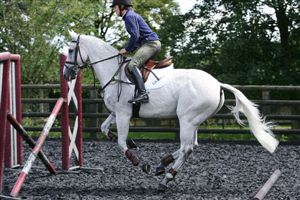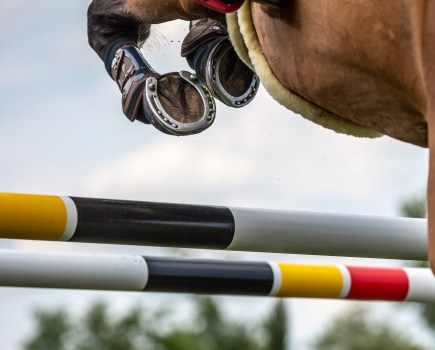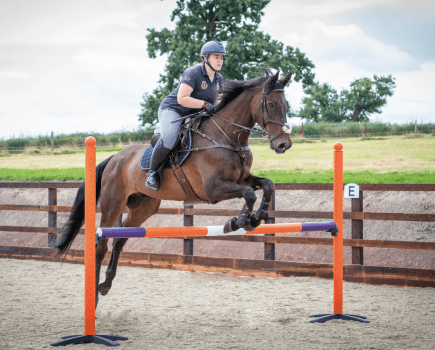International eventer, John-Paul Sheffield, reveals his top exercises to beat common jumping problems…
 Rushing into fences and late and early take off are two jumping problems that can be addressed with the same exercises.
Rushing into fences and late and early take off are two jumping problems that can be addressed with the same exercises.
Why the problem?
You may have problems with early or late take-off because you have trouble seeing a stride. These exercises can help:
How to help…
Maintaining a regular canter rhythm will help prevent all of the jumping problems mentioned in this article. Whatever your problem, start with this exercise because it will help you achieve the basis of which everything else is linked.
JP describes this exercise as the trunk of a tree. All the other exercises in this article branch off this exercise, but the roots of them all, come back to this place.
EXERCISE:
Place three or more poles about three (of your) strides apart in the centre of your school or jumping field.
Work around the poles to warm up and concentrate on keeping your pace nice and regular. In canter, come down the poles, giving yourself ample time to get your line straight on approach.
You’re aiming for your horse’s canter stride to fall exactly in the middle of each pole. Keep your horse between hand and leg over the poles; don’t be temped to rush or chase him.
JP says: “Some people get into the habit of checking the horse to shorten him before the poles/fence, then pushing him on, to lengthen his stride as he gets two/three strides away. Try to ignore the poles in this exercise, and instead, focus on where your horse’s stride falls. It helps to think of this exercise as practising for a dressage test, and then you mentally take yourself away from the jumping, to concentrate on the flatwork. Be precise and keep practising.”
If you want a shorter or longer stride you can move the poles as appropriate.
From here, you can add a jump to the end of the poles, but stick with the poles until you feel confident; the last thing you want to do is end up crashing through the jump as this can ruin all the good work you’ve done so far.
Remember to ride this exercise on both reins.







